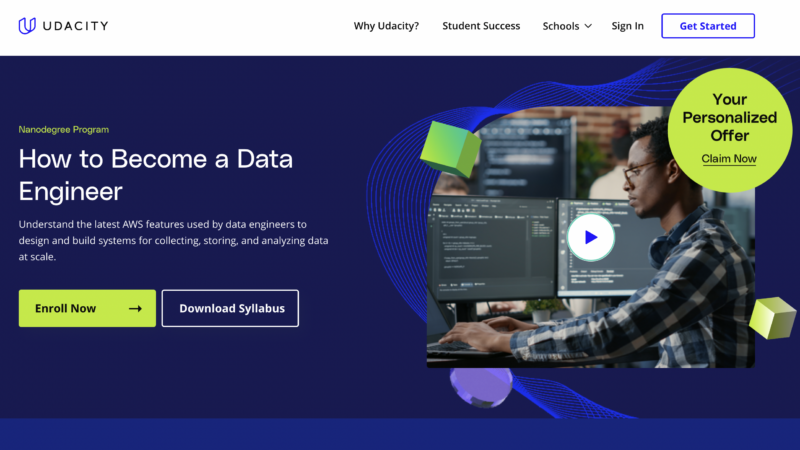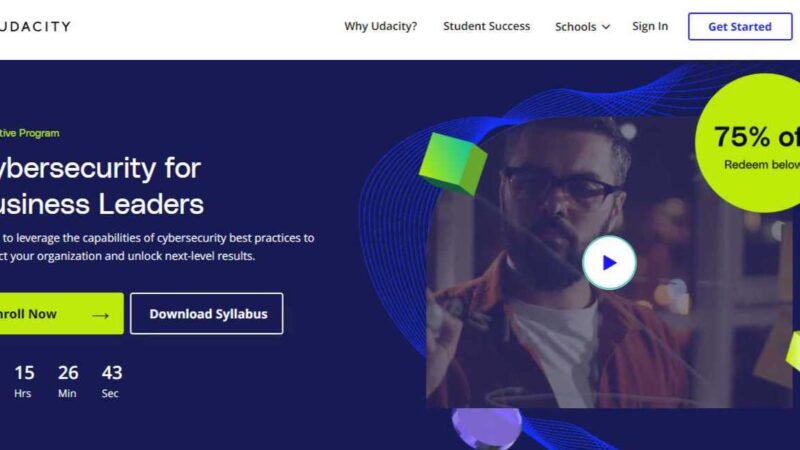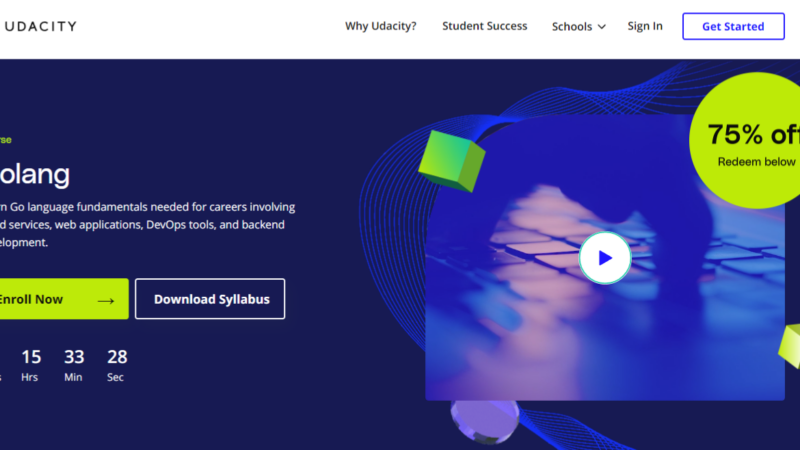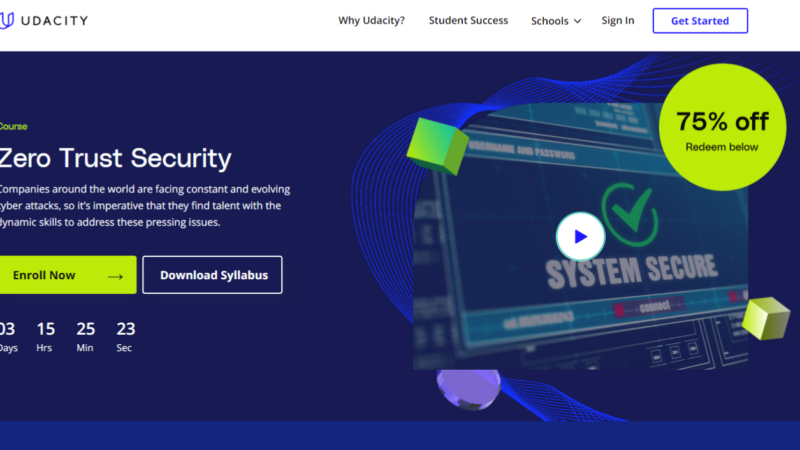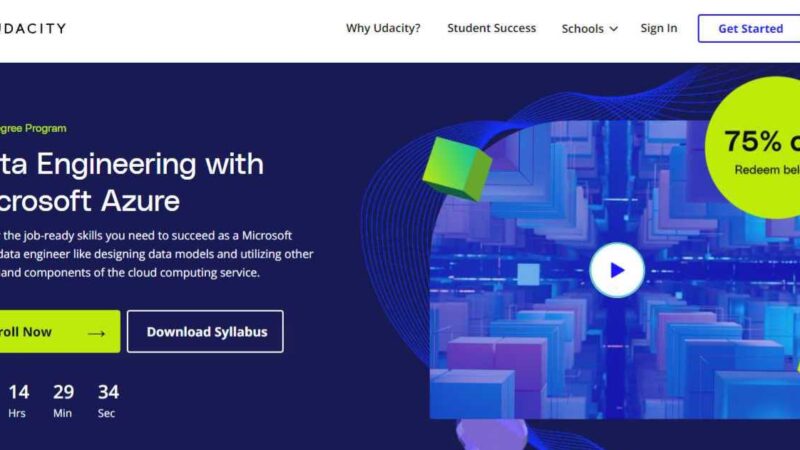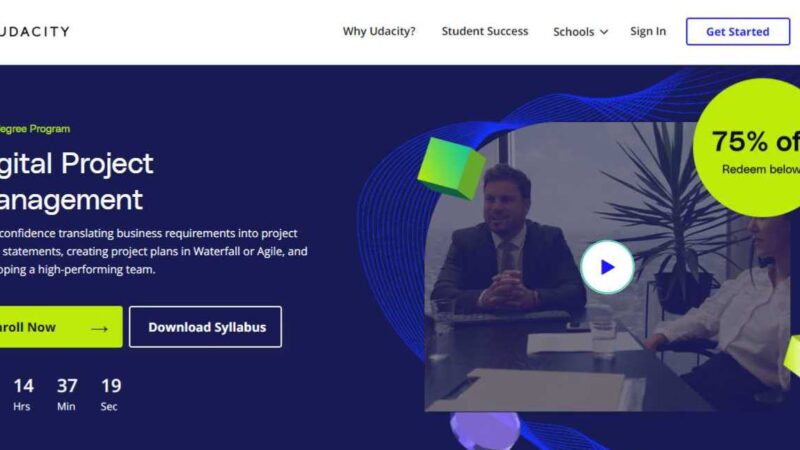Udacity RPA Developer Nanodegree Review

Businesses industry-wide have been making the switch to a more digital way of doing things. As technology continues to advance, the options that businesses have to amp up their production are becoming more sophisticated. Using a combination of IT and complex infrastructures, developers can tackle issues corporations are facing. Creating solutions that push user interaction to the next level is key to solving complex problems but, not everyone can do it.
As an RPA developer, you could be behind the planning and creation of automated tasks that take care of issues and reduce the amount of human interaction needed. In this day and age, no one should be left to do the busywork, creating programs that make business life easier. To become an RPA developer, you’ll need the proper skills, which you can score online taking as much time as you like. With the Become an RPA Developer Nanodegree from Udacity, you can get all the skills plus, enjoy some extra perks. But is it worth it? We’ll take a look and help you decide.
About Udacity
Udacity is an online academy that specializes in computer science courses. They started off streaming a few videos, offering free courses for all. Over the decades, they have partnered up with top names in the industry to create courses, creating nanodegrees that dive deep into topics and come with a certification. Many successful students have gone on to land jobs across the field, and have enjoyed the perks that come with online short-term courses.
You’ll have hands-on experience that you can list on your resume before you land a job plus, build up your portfolio thanks to the final capstone project. Plus, the opportunity to learn at your own pace and choose when you log on and off.
Nanodegree Extras
Nanodegrees are great. They take a short amount of time to complete and cost way less than a four-year degree. Plus, they get straight to the point, covering a specific topic in the field. There are many reasons why you should choose a Udacity nanodegree, including:
Flexible learning
You can learn when you want and wherever you want, enjoying the opportunity to take as long as you want to complete the course.
Real industry projects
Each Udacity nanodegree comes with projects within that allow learners to practice what they have learned. Some of these are created with top names in the industry.
A mentor
Just in case there are ever any technical issues or doubts within the course, learners will have their very own mentor available day and night.
Career services
Career experts will help learners clean up their resume and get prepared for the big day with help from a mock interview.
A-list Instructors
All courses are taught by experts in the field. They usually have impressive educational and industry experience.
Meet your Instructors
Udacity makes it their duty to find some of the best in the industry to add to their list of A-list instructors. They all have experience in the field and amazing educational backgrounds over advanced topics. Meet the instructors for this course.
Kristina Kaldon
Kristin’s original career path was Astronomy, studying at Penn State University. Her experience in the field started with a position at MIT in London, where she worked in a laboratory with satellites. During her time on the job, she studied Aerospace Engineering, later teaching herself the knowledge needed for RPA development. Her vast experience and current position with the UiPath Learning Team make her the perfect instructor for this Udacity Nanodegree course.
Niyaz Ahmed
Niyaz studied in Mumbai, where he obtained a degree in Engineering. From there, he took the path to help other learners, working as a mentor at NIIT LTD. There, he helped learners work on projects that were meant to deepen the understanding of different programming languages. Now, he is an instructor for UiPath, helping various institutions understand the UiPath software.
Prerequisites And Hardware Requirements
Udacity recommends that anyone interested in the course at least have a basic understanding of Microsoft applications. They should also know about data manipulation and techniques used in the industry along with a basis of logical sequences and flows. Additional knowledge that is suggested to ease up the course include:
- Experience with a programming language
- Scripting in a programming language
- Knowledge of .Net frameworks
The course requires that each student have access to a window-based system with Excel and Outlook. Hardware requirements include:
- CPU: 2 x 1.8GHz 32-bit (x86)
- 4GB of RAM
- Windows 7 and up
- Chrome
- Microsoft Office
Course Breakdown
The course content is meant to provide learners with the skills necessary to develop and deploy software robots with the purpose of making business processes more efficient. It is broken down into three sections, each with a project developed to increase learner’s understanding with hands-on practice.
Intro to RPA with UiPath
Throughout the course, you’ll be using UiPath so, an in-depth understanding is key. You’ll begin with the basics, learning how UiPath works with RPA. Everything is addressed in this introductory section, including programs within the UiPath Studio and data storage techniques when dealing with applications. Toward the end, you’ll take a look at selectors, learning how they help to enhance the user interface.
Project: Learning the Powers of Automation
Businesses need the help of automated actions to keep things running smoothly. That is what this project is all about, as you attempt to organize and sort several annual reports. You’re given what you need and set free to set up your own method of automation where you can sort reports with just one click.
Advanced Automation Techniques and Design with UiPath
In this section, you’ll take your automation skills to the next level, working with more Studio tools including extraction and manipulation of data and debugging techniques. This section ends with a look at UiPath’s Orchestrator, a management tool that allows you to keep up with all your projects. Within Orchestrator, there are also a number of developer tools, helping to make projects scalable.
Project: Scraping with Automation
The automated task in this project deals with emails. You’ll work to develop a process that automatically scans emails and finds invoices, putting them all together in one easy to reach place. Using UiPath’s developer dashboard, you’ll create a way for all information to be uploaded into Excel, getting rid of all the bust work.
RPA Team Best Practices
Nothing in the software world is error-free forever. Things are constantly changing and updated and might not support your recent changes. This section will touch on this topic and also introduce you to common challenges with RPA development. You’ll see how teams work together to create solutions to advanced issues using code. This part ends with a look at a sophisticated framework, Robot Enterprise, which is needed for production.
Project: RPA Code
When writing code, there are sometimes errors. Developers often work together and are sometimes called to review code that they have written that is possibly producing errors. In this project, you’ll take a look at a colleague’s work, checking for any errors.
Capstone: Personal Use Automation
The course ends with a capstone project where you get to put all of your new knowledge to the test. You’ll start by stating the steps of the process and pointing out the requirements listed in the Process Definition Document (PDD). You’re then set free to design your very own automated solution and showcase it to your superiors.
How Long Does It Take?
With Udacity, you can take advantage of the opportunity to learn when you want and take as long as you want. With flexible learning, you can take your time and complete the course according to your schedule. As an estimate, Udacity claims that, at just 5 to 10 hours per week, this course will take 4 months to complete. Though 4 months is not long, and flexible learning sounds great, the time you take affects the cost of the course; something you should think about before taking too long.
What’s the Course Cost?
Udacity is set up with monthly access. That is how you are able to take as long as you would like. But each month comes with a price tag, one that might make you want to get done with the course faster. Each month of access for Udacity runs $359 per month.
Udacity has another option to pay, that takes their estimate into account. When signing up for the course, you can choose this option and pay a one-time fee upfront with a 15% discount tacked on. If you do it this way, it comes out the $1236.
Both options are great depending on your budget and your goals. If you get started and tackle the topics and project, you could save a ton of money and be on your way to land your first job. If not, you may end up spending much more than you bargained for.
Learner Reviews
This course is one of Udacity’s newest courses and is set to start in a few days. So, there are not any reviews as of yet. Still, Udacity has a pretty solid track record, receiving great reviews for other courses and for the academy as a whole. We’ve included a bit of what people are saying below.
“Taught by industry-leading RPA experts, the Udacity RPA Developer Nanodegree program is designed to provide learners with the practical experience and resources needed to understand and facilitate RPA, which occurs when basic tasks commonly performed by humans are automated through software or hardware systems that function across a variety of applications.” – Daniel M.
“Our Udacity review found many great Nanodegree programs that users can take part in, both free and paid, and offered at many levels. The qualified instructors seemed to be rather knowledgeable as one would hope, but the key part is that you have to want to learn and upskill or cross-skill yourself in order to make a success of the platform.” – Felipe B.
“With extensive career support services and best-in-class user experience, Nanodegrees become very appealing. Not to mention the user-friendliness and high production value of the course materials. These are some of the reasons why Udacity is one of my favorite platforms for online education.” – Sander T.
Can I Get a Job?
A study by Technojobs showed that the number of RPA jobs has increased 15 times from 2016 to 2018. That is predicted to increase in the year 2020 and beyond, as the need for automated solutions for businesses becomes more of a necessity. The average salary of an RPA developer is $79,609 per year. This increases the more time you’re in the field and with the more knowledge you gain. As the demand goes up, the need for professionals that can tackle difficult industry issues will increase, perhaps driving up the average salary even higher to make up for the shortage.
Final Thoughts: Is It Worth It?
Becoming an RPA developer is promising. It comes with an exciting career path where you can help take businesses to the next level. To land a job in a promising field, Udacity is a good place to start, and, after this review, you probably see why. Each nanodegree comes with perks plus, the pricing is way less than any four-year degree out there.
The market is growing and, is said to continue to go up as more advances come along that push automation to all new heights. That being said, is it worth it? We say yes. In just a few months, you could have a certification that gets you in the doors to a whole new career. You won’t have to worry too much about it, enjoying career services and getting your resume sparkling before you send it out. Starting a new and exciting career path is easy, and you can be on your way in just a few months with a nanodegree from Udacity.
